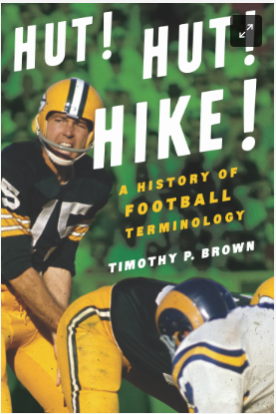The game of baseball has a long and storied history of its players, teams and managers. The stats, the championships, pitching duels and so much more make this one of the most interesting items to study and watch.
Sports History
Omar Visquel Legendary Shortstop
-Defensive Wizard: Widely considered one of the greatest fielding shortstops ever, Vizquel boasts an MLB record 11 Gold Glove Awards, including a historic nine consecutive wins from 1993 to 2001. His smooth glovework and exceptional range at shortstop were a sight to behold.
-Durability and Consistency: Vizquel holds the record for most games played at shortstop (2,709) and is the leader in total double plays turned by a shortstop. This incredible consistency speaks volumes about his dedication and longevity.
-Solid Offensive Contributor: While defense was his calling card, Vizquel wasn't a slouch at the plate. He compiled a respectable .272 lifetime batting average with over 2,800 hits, 400 stolen bases, and the ability to contribute offensively throughout his career.
-Accolades and Accomplishments: A three-time All-Star, Vizquel played for several teams including the Cleveland Indians, San Francisco Giants, and Chicago White Sox. Though he never won a World Series championship, his defensive brilliance and stellar career make him a deserving candidate for the Baseball Hall of Fame.
Born April 24, 1967, in Caracas, Venezuela, was legendary MLB Shortstop Omar Visquel. 24-year Major League Baseball career, Vizquel played for the Seattle Mariners, Cleveland Indians, San Francisco Giants, Texas Rangers, Chicago White Sox, and Toronto Blue Jays.
Baseball's all-time best fielding shortstops, Vizquel won 11 Gold Glove Awards, including nine consecutive from 1993 to 2001. Among shortstops, his .985 fielding percentage is tied for highest all-time, he is the all-time leader in games played, and the all-time leader in double plays turned. Visquel is one of the top MLB players to have worn the Number 13 Jersey. one of the top MLB players to have worn the Number 11 Jersey. MLB Number 11 Jersey
Barry Larkin Hall of Fame Shortstop
Few players embody the spirit of a single franchise like Barry Larkin and the Cincinnati Reds. A hometown hero drafted by the Reds in 1985, Larkin spent his entire 19-year career wearing the iconic red pinstripes. This essay delves into the remarkable journey of a shortstop who cemented his place among baseball's elite.
Larkin's on-field brilliance was undeniable. A smooth-fielding shortstop with a cannon for an arm, he earned three Gold Glove Awards, his defensive wizardry a constant source of awe for fans. But his impact extended far beyond the glove. A gifted hitter with a sweet swing, he compiled a career batting average of .295, racking up over 2,500 hits and 198 home runs. His clutch hitting was legendary, with a knack for delivering in big moments.
Larkin's leadership qualities were another hallmark of his career. He captained the Reds to the 1990 World Series championship, displaying composure and grit under pressure. He was a vocal leader in the clubhouse, respected by teammates and opponents alike.
However, Larkin's story transcends statistics and championships. He played during a transitional period in baseball, a bridge between the "dead-ball" era and the offensive explosion of the late 1990s. He exemplified the complete player, skilled in all facets of the game.
Baseball Hall of Fame bio on Barry Larkin. Born April 28, 1964, in Cincinnati, Ohio, was Baseball Hall of Fame Shortstop, Barry Larkin. Larkin played for his hometown Cincinnati Reds for his entire career 1986-2004.
Barry made the most of his baseball career in the Majors as he was named to nine Silver Slugger awards, three Gold Glove awards, and the 1995 National League Most Valuable Player Award. He was selected to the Major League All-Star Game twelve times and is one of the top MLB players to have worn the Number 11.
The Baseball Brilliance of Richie Ashburn
Yet, for two decades, his impact on the Philadelphia Phillies and the National League was undeniable. This essay explores the career of Ashburn, a two-time batting champion and a Hall of Fame outfielder who captivated fans with his talent and hustle.
Ashburn's professional journey began in 1948, immediately making a splash as a rookie with the Phillies. His .333 batting average and All-Star selection showcased his exceptional hitting ability and a keen eye at the plate. He wasn't a power hitter, but his consistency and speed on the basepaths made him a constant threat. In 1951, Ashburn led the National League in hits three times throughout his career, a testament to his consistent contact hitting.
Defense was another hallmark of Ashburn's game. He routinely led the league in outfield putouts, displaying a smooth glove and a strong arm in centerfield. His baseball IQ and instincts made him a valuable asset in the Phillies' defensive scheme.
Despite his talent, Ashburn's tenure with the Phillies wasn't without challenges. The team struggled to achieve consistent success, and in 1960, he was traded to the Chicago Cubs. Though many saw it as the end of his prime, Ashburn rebounded with several productive seasons with the Cubs and later, the New York Mets.
Ashburn also played the positions of Left Fielder, Right Fielder, and Second Baseman wearing the Number 1 on the Philadelphia Phillies (1948-59), Chicago Cubs (1960-61), and New York Mets (1962). He is considered one of the top MLB players to have worn the Number 1 Jersey.
Hit 'Em Where They Ain't The Enduring Legacy of "Wee Willie" Keeler
Keeler's legacy rests upon his remarkable batting prowess. He compiled a career batting average of .341, placing him among the all-time greats. Notably, he achieved a phenomenal .400 batting average or above once in 13 consecutive seasons, with an average exceeding .300, showcasing his remarkable consistency. His 1897 season stands out, etching his name in the record books with a staggering .424 average, the highest single-season mark by a left-handed hitter, which remained unbroken for over four decades.
Beyond his batting average, Keeler mastered getting on base, achieving an on-base percentage above .400 for seven consecutive years. He understood the value of reaching base consistently, even through walks or singles, and his approach proved highly effective in generating runs for his team.
He wasn't just a one-dimensional player. Keeler displayed remarkable speed on the basepaths, stealing over 50 bases several times. Additionally, his fielding improved significantly after transitioning from third base to the outfield, ultimately becoming a reliable defender.
Keeler's impact transcended the statistics. He embodied a more strategic style of play, emphasizing precision and efficiency over brute force. His famous quote, "Keep your eye clear, and hit 'em where they ain't," captured his philosophy – prioritizing placing the ball strategically rather than aiming for home runs.
In a sport often dominated by power hitters, "Wee Willie," Keeler carved his path. Through remarkable batting consistency, a calculated approach, and an unwavering dedication to the game, he established himself as a legend, leaving an indelible mark on baseball history and inspiring future generations of players and fans.
Frank Grant early Baseball star
The Baseball Journey of Monte Irvin
Born in 1919, Irvin's talent blossomed early. He excelled in four sports in high school and became a star in the Negro Leagues with the Newark Eagles. His well-rounded skillset included power-hitting, solid fielding at shortstop, and impressive base-stealing ability. He even played professionally in Mexico and Cuba, further enhancing his reputation as one of the best players of his generation.
However, the color barrier in baseball prevented Irvin from showcasing his talents on the biggest stage until 1949, when he joined the New York Giants at 30. Irvin quickly established himself as a force despite the delayed entry, hitting a .293 batting average with 24 home runs in his first entire season (1951). He finished third in the National League MVP voting, showcasing his ability to compete with the best even after years away from the major leagues.
Irvin's impact transcended statistics. He became a mentor and role model for younger players like Willie Mays, who joined the Giants in 1951. His calm demeanor and leadership helped pave the way for future generations of Black players in baseball.
While injuries and lost prime years undoubtedly impacted his ultimate statistics, Irvin's career speaks volumes about perseverance and overcoming adversity. He retired in 1956, leaving behind a legacy of excellence, both on and off the field. He was inducted into the Baseball Hall of Fame in 1973, a testament to his undeniable talent and the lasting impact he had on the sport.
Monte Irvin's story reminds us of the human cost of discrimination and the importance of recognizing the contributions of athletes who were denied the opportunity to reach their full potential on a level playing field. His talent, leadership, and resilience inspire generations of players and fans alike.
Luis Aparicio the Amazing MLB Shortstop
Born in Maracaibo, Venezuela, Aparicio's baseball journey began early. His natural talent was undeniable, and by 1956, at the tender age of 19, he found himself in the major leagues with the Chicago White Sox. While his batting average was respectable, it was his defensive prowess that truly stole the show. Aparicio possessed a seemingly supernatural ability to anticipate plays, range that covered seemingly impossible ground, and a throwing arm that could rifle the ball across the diamond. Year after year, he dazzled fans with acrobatic catches and bullet throws, earning him the nickname "El Mago" – The Wizard.
Numbers only tell part of Aparicio's story. He holds the record for most career Gold Glove Awards for shortstops (nine), a testament to his defensive brilliance. But his impact went beyond statistics. His speed on the basepaths was a constant threat, terrorizing opposing pitchers and racking up over 500 stolen bases throughout his career. More importantly, Aparicio brought a joy to the game that was contagious. His hustle and energy were infectious, lifting the spirits of teammates and fans alike.
However, Aparicio's career wasn't without challenges. He entered the major leagues during a time when Latino players were still a novelty. He faced racism and prejudice, but Aparicio responded with grace and determination, becoming a role model for future generations of Latino players.
In 1984, Luis Aparicio's place in baseball history was cemented with his induction into the National Baseball Hall of Fame. He was not just a great shortstop, he was a pioneer who helped pave the way for Latino players in the major leagues. Aparicio's legacy extends beyond the diamond; he is an icon in Venezuela, a symbol of national pride and a testament to the transformative power of baseball.
Life and career bio of Luis Aparicio. Born April 29, 1934, in Maracaibo, Venezuela, was Baseball hall of fame Shortstop Luis Aparicio.
He played in the MLB from 1956 to 1973 for three American League (AL) teams, most prominently the Chicago White Sox, but the Baltimore Orioles (1963-67) and Boston Red Sox (1971-73) as well. Aparicio's play in the field is what made him stand out among his peers as he won nine Gold Glove Awards, setting a league record since matched only by Omar Vizquel. Luis is one of the top MLB players to wear the Number 11 Jersey. MLB Number 11 Jersey.
Baseball Career Bio on Billy Southworth
He played for 17 seasons in the big leagues, primarily with the Phillies and St. Louis Browns. Southworth was a versatile player who could play both first base and the outfield, and he was known for his solid hitting and good baserunning skills. He was a two-time All-Star and finished his career with a batting average of .277 and 1,759 hits.
After retiring as a player in 1931, Southworth went on to manage in the major leagues for 24 seasons. He managed for five different teams, most notably the St. Louis Browns and Boston Braves. Southworth led the Browns to their only American League pennant in 1944, and he also managed the Braves to two National League pennants in 1948 and 1949.
Southworth was a tough and demanding manager, but he was also respected by his players. He was known for his ability to get the most out of his teams, and he is considered one of the best managers in baseball history. Southworth was inducted into the Baseball Hall of Fame in 1982.
The legend of baseball managers also had a brilliant playing career in the MLB. He was a member of the 1926 World Series team.
Mordecai Brown - Three Fingers Brown
Born in 1876, Brown's path to baseball stardom wasn't conventional. His early career was a journeyman's odyssey, bouncing between minor league teams before landing with the St. Louis Cardinals in 1903. Despite his unorthodox grip due to the missing fingers, Brown showcased exceptional control and a devastating curveball. However, his debut season was a struggle, and he was traded to the Chicago Cubs after just one year.
It was in Chicago that Brown's career truly flourished. Under the tutelage of legendary manager Frank Chance, Brown thrived in a pitching-centric era. His pinpoint accuracy and ability to induce groundouts made him a perfect fit for the Deadball Era, where low scoring games were the norm. Between 1904 and 1912, Brown became the anchor of the Cubs' pitching staff, leading the team to two World Series victories in 1907 and 1908. He consistently racked up wins, averaging over 22 victories a season during this dominant eight-year stretch.
Born October 19, 1876, in Nyesville, Indiana, was Baseball Hall of Fame Pitcher Mordecai "Three Finger" Brown. This legend was a World Series Champion with the Chicago Cubs in 1907, 08. He led the National League in wins in 1909 and the entire MLB in ERA in 1906.
Paul Blair
Blair played wearing the number 6 on the Baltimore Orioles (1965-76) for 12 seasons as he had 134 career Home Runs, and 8 Gold Glove Awarded Seasons. Paul is one of the top MLB jersey Number 6s of All-Time.
February 7 Jersey Numbers

Here are some jersey numbers in team sport history that stuck out. February 7, 1949 - Number 5, Joe DiMaggio became the first ball player to earn $100,000 a yearas he did so under contract with the New York Yankees . February 7, 1958 - The Brooklyn Dodgers official...
- The use of a "banner" counts as 10 words!
February 6 Jersey Numbers
Sports history is made every day of the year. We will preserve at least a small sampling from some great athletes every day based on the uniform number they wore. 31 - 9 - 14 - 83 - 7 - 16 - 22 - 80 - 11 - 84 - 10 - 83 - 12 February 6, 1926 - St Louis Browns acquire catcher Wally Schang from ...
February 5 Jersey Numbers

Here is what happened in Sports Jersey History on February 5: Kareem hits a new NBA high, Hines hauls in a big one and Bob Douglas is honored. Our Sports Jersey Take of the Day is from historian Joe Ziemba. Listen in to learn more about sports history along with me from the unif...
- The use of a "banner" counts as 10 words!
The Oregon Agricultural Hard Court Stars
(image) Members of the 1922 Oregon Agricultural College men's basketball team. From left to rightː Gill (forward), Hjeite (enter), and Feraley (forward), from February 5, 1922. This image is courtesy of Wikimedia Commons. We know the OAC by a different name today, Oregon State. The Oregon Ag...
The 1897 Strathcona Hockey Team
.jpg?https://jerseydispatch.com/pfeL/p/c312642c0431e75b485e432232c99c1c/website/Sports-History-Photo-of-the-Day/February-Images/February-4-Image/images/.Strathconas_First_Hockey_Team_(21879505322).jpg)
Formal portrait of Strathcona's First Hockey Team (1897). Stratchcona resides in British Columbian Province, and is the oldest residential neighbourhood of Vancouver, (image) Some players are labeled by number. 1. Bob Blain 2. Jim Blain 3. Billy Sharkles 4. Fred Richards 5. J. McIn...
- The use of a "banner" counts as 10 words!
February 4 Jersey Numbers

Here is what happened in Sports Jersey History on February 4 : We talk about the great goaltending of Grant Fuhr and Ray Durbin of Row One Brand stops by to to discuss two of his favorite number 40s. Listen in to learn more about sports history along with me from the uniforms and jers...
- The use of a "banner" counts as 10 words!






